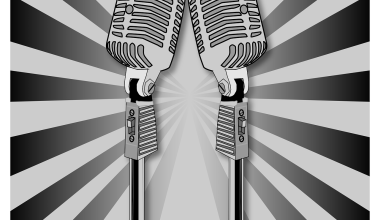Music has always been a universal language, capable of bridging divides and bringing people together. But have you ever wondered what happens when two completely different musical styles come together? Enter the world of music merger. It’s a phenomenon where creativity knows no bounds and melodies blend to create something extraordinary. This fusion is not just about sounds; it’s about culture, innovation, and endless possibilities.
What Exactly is Music Merger?
Simply put, music merger is the art of combining different musical genres, elements, or traditions into a cohesive and harmonious piece. Think of it as taking the best parts of two worlds and creating a new universe. Artists and producers merge music styles to break barriers and introduce listeners to fresh sounds that push creative boundaries.
For example, when pop and classical music join hands, you get masterpieces like Queen’s “Bohemian Rhapsody.” Similarly, when hip-hop meets jazz, you experience soulful tracks like those from Kendrick Lamar’s “To Pimp a Butterfly.” The result is a unique, genre-bending experience that stays with you.
Why is Music Merger So Popular?
It’s simple—we crave novelty. In a world overflowing with content, people yearn for something that feels different yet familiar. Music merger delivers just that. It’s exciting, unpredictable, and inclusive. Moreover, with technological advancements, merging music has never been easier. Digital tools allow artists to experiment freely, resulting in endless possibilities for innovation.
Let’s not forget how globalization has played a role. Today, artists can access sounds from across the globe, leading to a melting pot of cultures and ideas in their work. Whether it’s a Bollywood tune infused with EDM beats or a flamenco guitar set to reggae rhythms, the results are nothing short of magical.
The Magic Behind the Scenes
Music merger isn’t just about throwing sounds together. It requires a deep understanding of the genres involved and a clear vision of what the final piece should evoke. Producers and artists often start with a common thread—a rhythm, melody, or theme—to guide the process. They then layer elements carefully, ensuring each component complements the other.
Take the case of “Despacito,” a global hit that blended Latin pop with reggaeton. The song’s universal appeal came from its infectious rhythm combined with catchy lyrics, proving that music merger can transcend language and cultural barriers.
How Music Merger Shapes Culture
Music has always reflected the times, and music merger is no exception. It mirrors the interconnectedness of our world, showing how cultures can coexist and thrive together. This phenomenon isn’t just about music; it’s about breaking stereotypes, embracing diversity, and fostering global unity.
Consider K-pop’s rise to fame. Bands like BTS blend traditional Korean instruments with Western pop, R&B, and hip-hop influences. The result? A global sensation that has millions grooving, regardless of their native tongue. This cultural exchange enriches the music industry and opens up new avenues for collaboration.
Benefits of Music Merger for Artists
For artists, merging music styles is a playground of creativity. It allows them to:
- Explore New Horizons: Experimenting with different genres can lead to uncharted creative territories.
- Reach a Broader Audience: Blended styles appeal to diverse listener groups, increasing their fan base.
- Stay Relevant: By embracing trends and innovating, artists can keep their music fresh and exciting.
Let’s look at Billie Eilish, who has seamlessly merged electropop, indie, and alternative elements in her music. Her unique style has catapulted her to stardom, proving that taking risks pays off.
Music Merger’s Impact on Listeners
As listeners, we benefit immensely from music merger. It expands our musical palette, introduces us to new cultures, and makes our playlists more dynamic. Who doesn’t love discovering a fresh sound that feels like it was made just for them?
Moreover, music merger can evoke powerful emotions. When familiar elements meet surprising twists, it creates a sense of wonder and excitement. It’s why songs like “Old Town Road” by Lil Nas X, which combines country and trap, became an instant hit.
Challenges in Music Merger
While music merger is exciting, it’s not without challenges. Here are some hurdles artists face:
- Finding Balance: Ensuring that no single element overpowers the others can be tricky.
- Audience Reception: Not everyone is open to change. Some purists may reject merged genres.
- Cultural Sensitivity: Artists must respect the origins of the genres they blend to avoid appropriation.
Despite these challenges, the rewards often outweigh the risks. The more artists push boundaries, the more they enrich the musical landscape.
The Future of Music Merger
The future looks bright for music merger. As technology continues to evolve, so will the possibilities for blending sounds. AI and machine learning are already helping artists analyze and combine musical elements in innovative ways. Imagine a world where your favorite genres are merged seamlessly, creating personalized soundtracks for every moment of your life.
Additionally, music merger has the potential to foster greater global understanding. By celebrating diversity through sound, it can bring people closer and encourage cultural appreciation. The next big hit might just be a fusion of sounds you never imagined together.
Conclusion: The Endless Melody
Music merger is more than just a trend; it’s a testament to human creativity and our ability to find harmony in diversity. By blending genres, cultures, and ideas, it creates something that resonates deeply with listeners worldwide. Whether you’re an artist looking to innovate or a listener seeking fresh tunes, the world of music merger has something for everyone.
For further reading, explore these related articles:
For additional resources on music marketing and distribution, visit DMT Records Private Limited.






